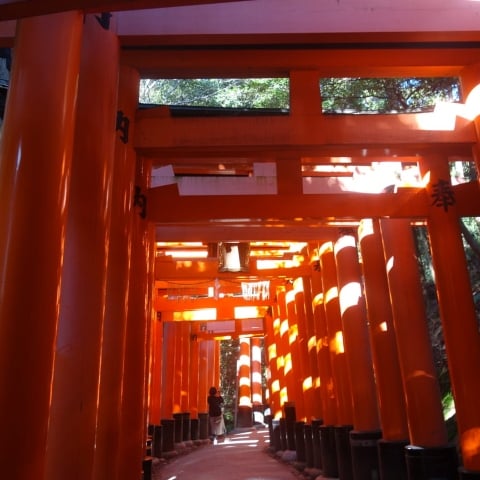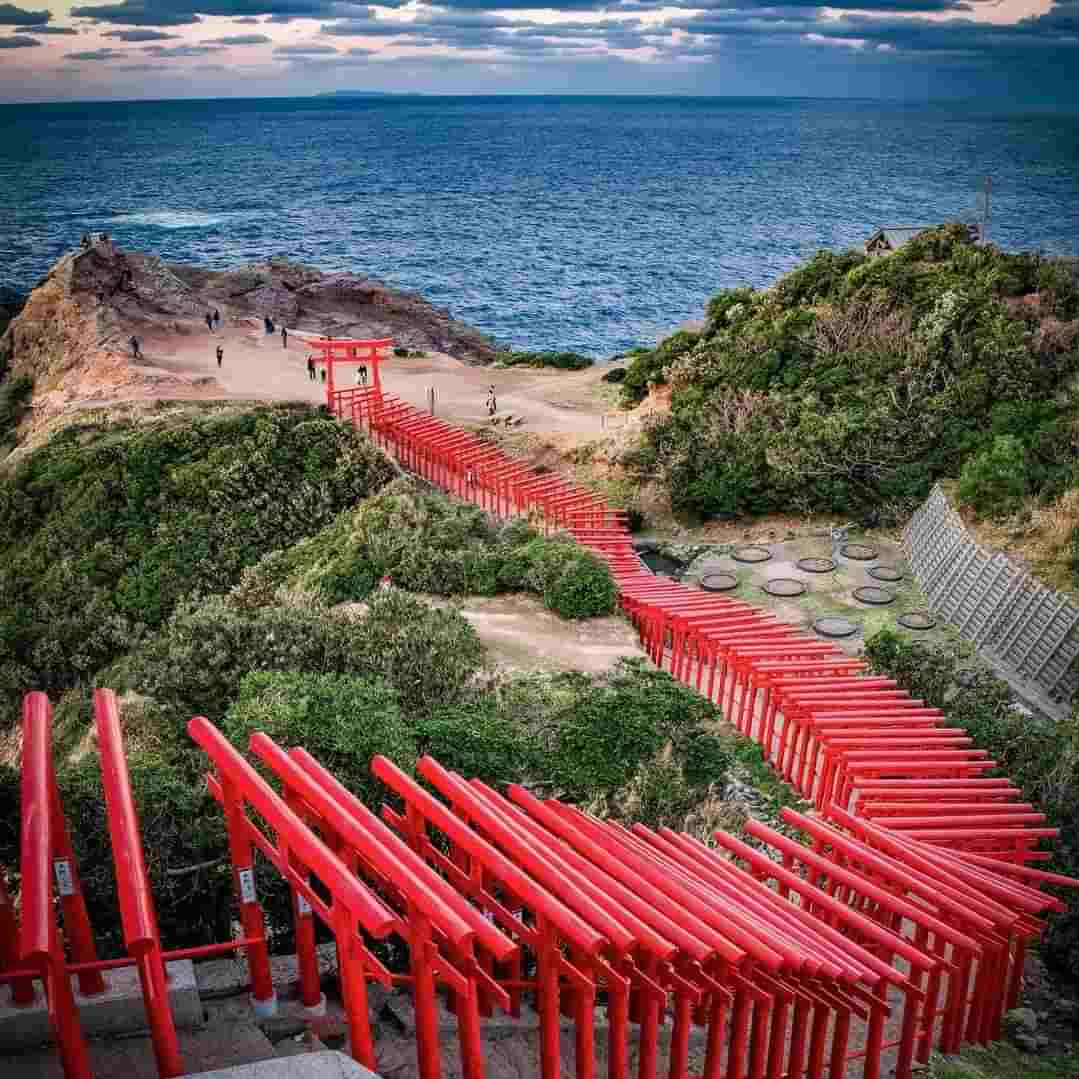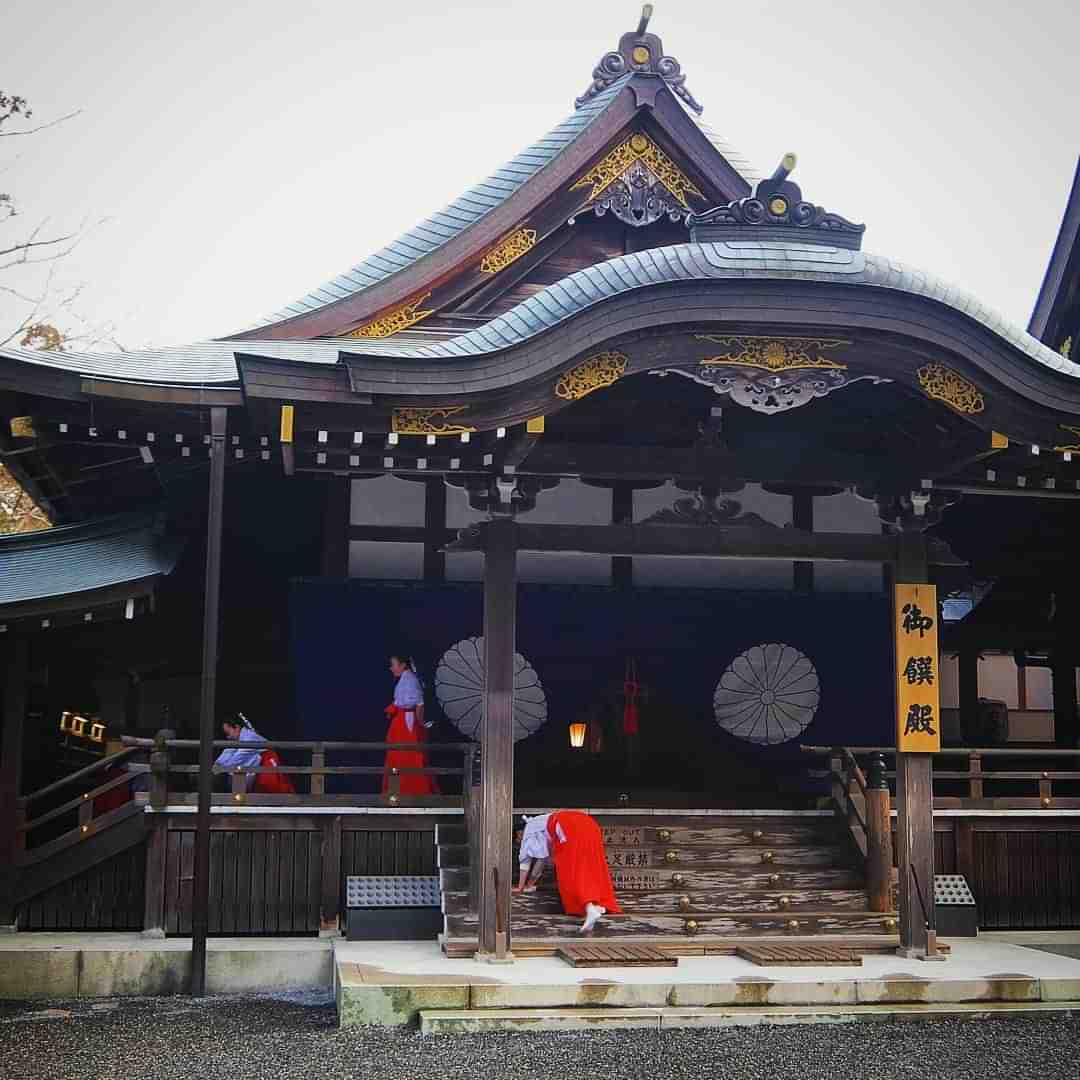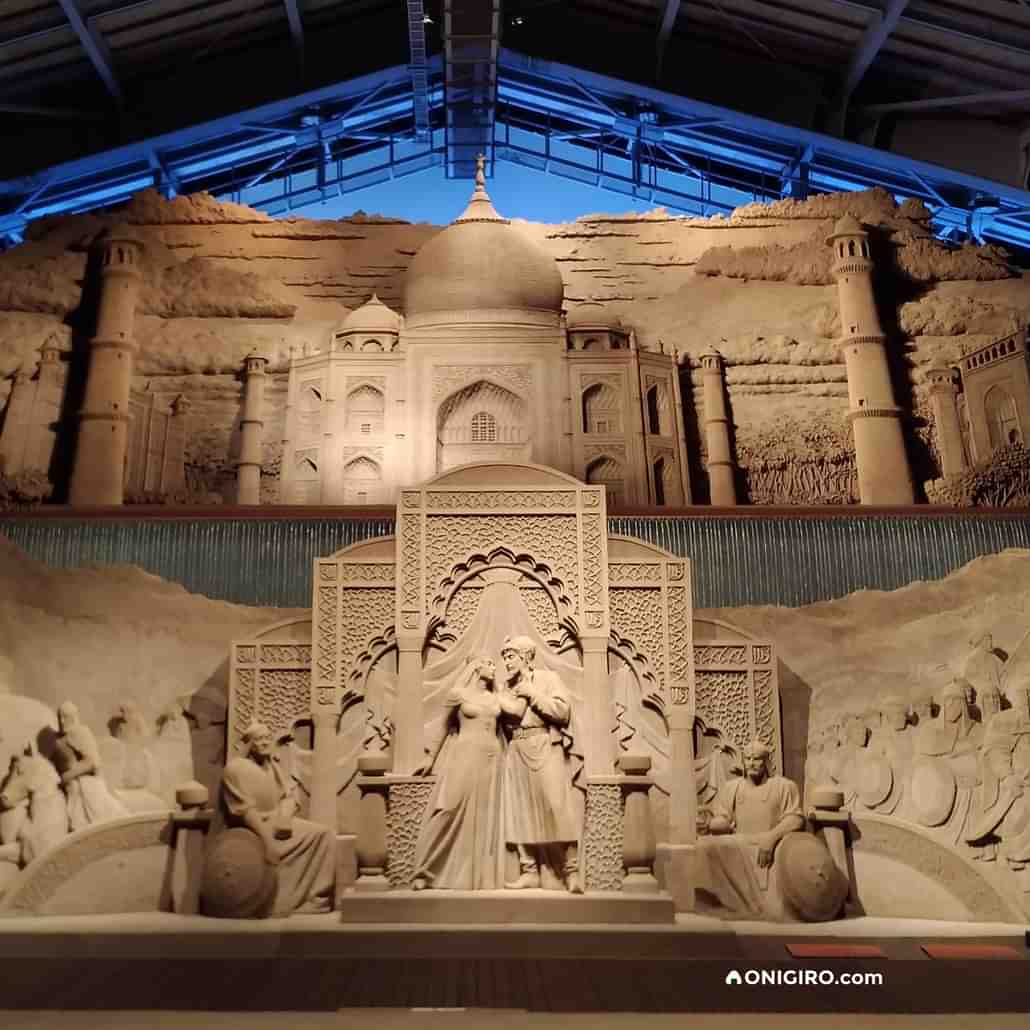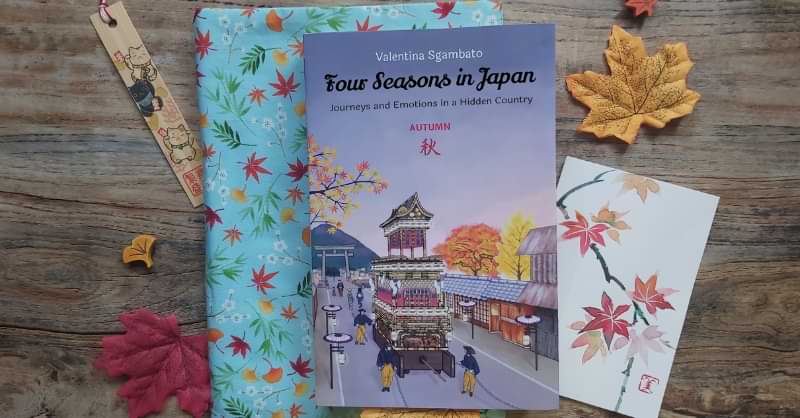Kagawa prefecture & Takamatsu city guide
Takamatsu, capital of Kagawa prefecture, the city of delicious udon and ancient pine trees
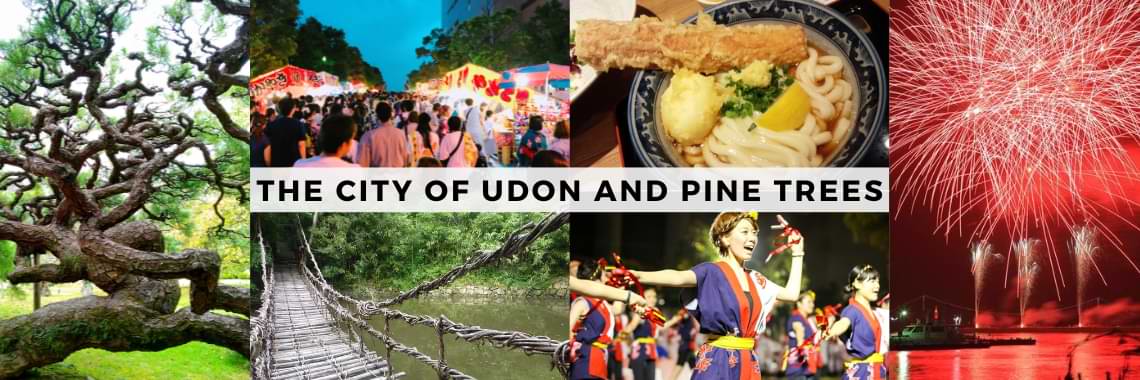
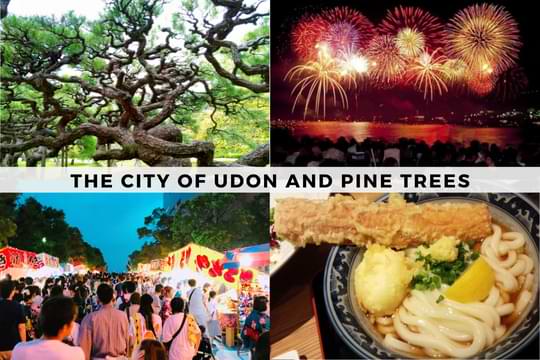
Here’s our favorite times of the year to visit Takamatsu city and Kagawa prefecture, while at the end of the page you’ll find an original itinerary to explore the city:
- During the Obon festivities of mid August, the city fires up with Sanuki Takamatsu Matsuri, featuring dances, food stalls and fireworks show;
- In mid November, Ritsurin-kōen Garden is open until night, so you can enjoy autumn foliage after a good bowl of Sanuki udon, the region’s most famous food.
Festival & events in Kagawa and Takamatsu
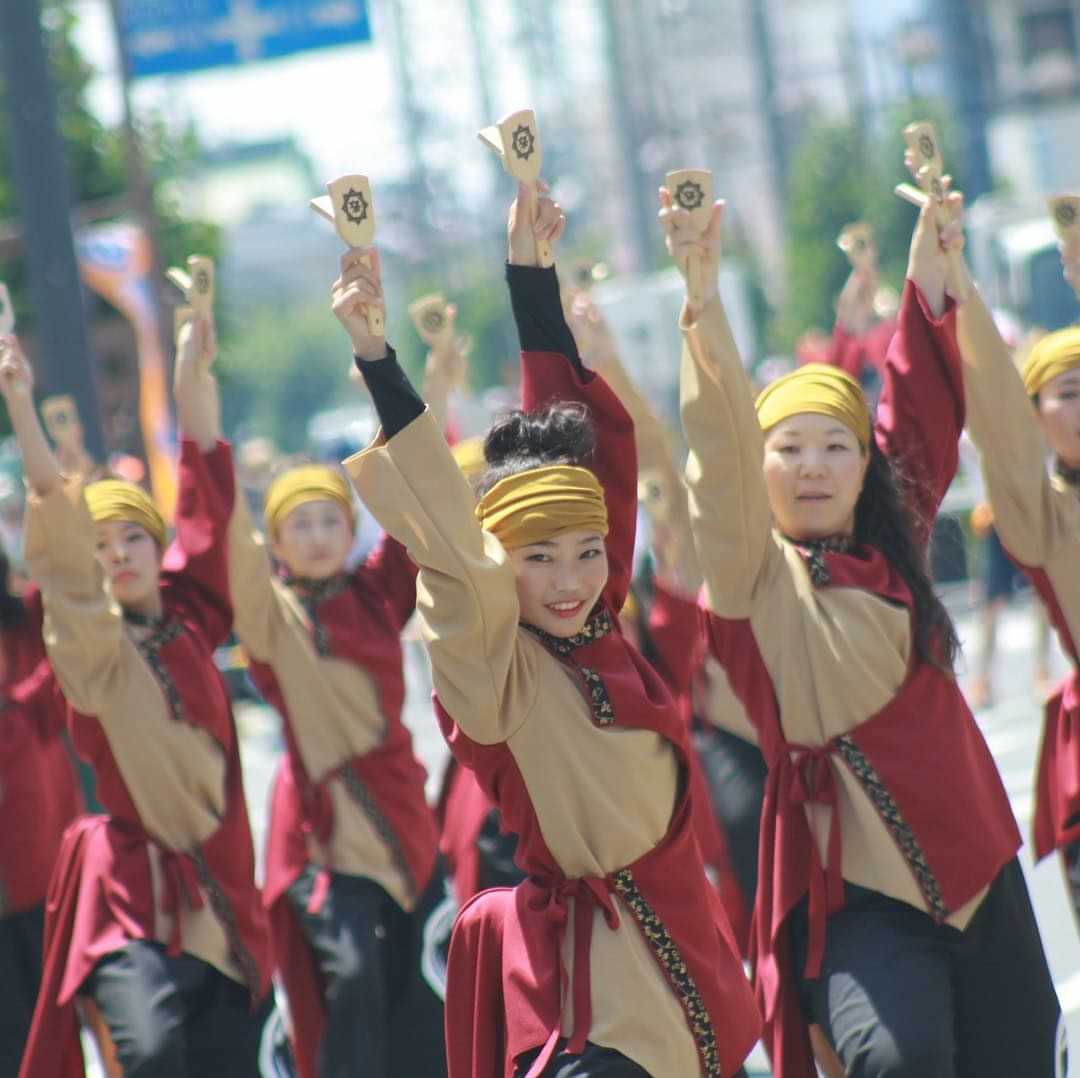
Kanonji Zenigata Matsuri
かんおんじ銭形まつり
When: weekend around 15 of July
[past dates: July 16 (2022), 13~14 (2019), 14~15 (2018), 15~16 (2017)]
Where: Kanonji city streets
Thousands of Yosakoi dancers dancing in the streets, with a fireworks display on Saturday.
Visit the official website (Japanese) and check this flyer of a past edition to know more.
Pic © zenigata_matsuri
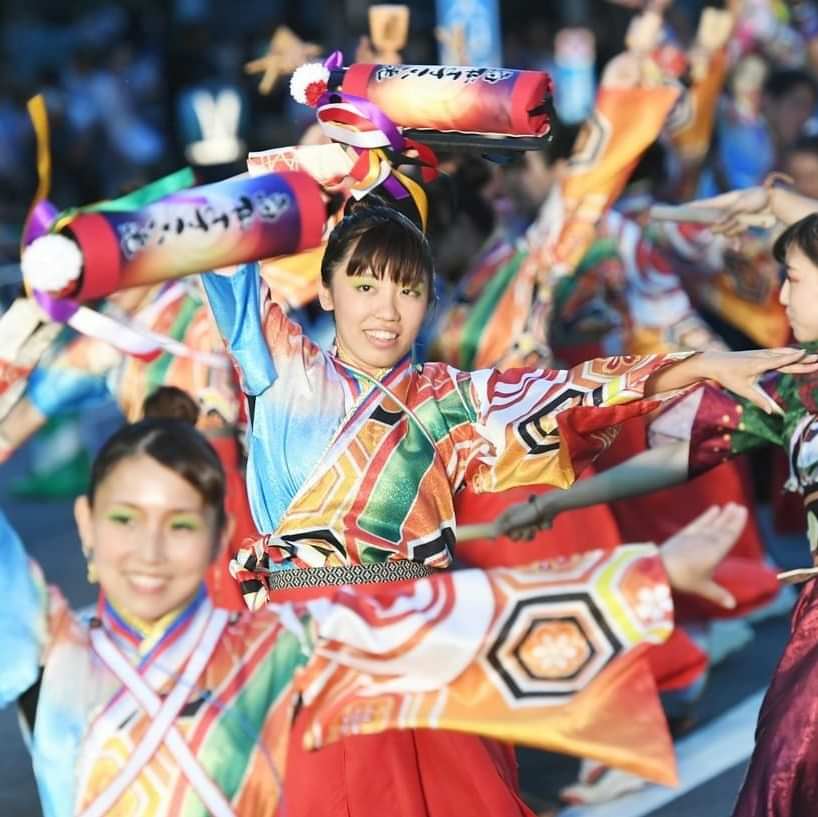
Sanuki Takamatsu Matsuri
さぬき高松まつり
When: 12~14 of August, all years same days
Where: Chūō-kōen Park and nearby streets
This summer festival takes place during the Obon festivities, with impressive Yosakoi dances performed across the streets.
Festive stalls are located around main stage, full of traditional Japanese street food, sweets and games. On August 13, a 1 hour fireworks show is performed at 20:00.
Visit the official website (Japanese) and check the PDF program of a past edition to know more.
Pic © shikokunews
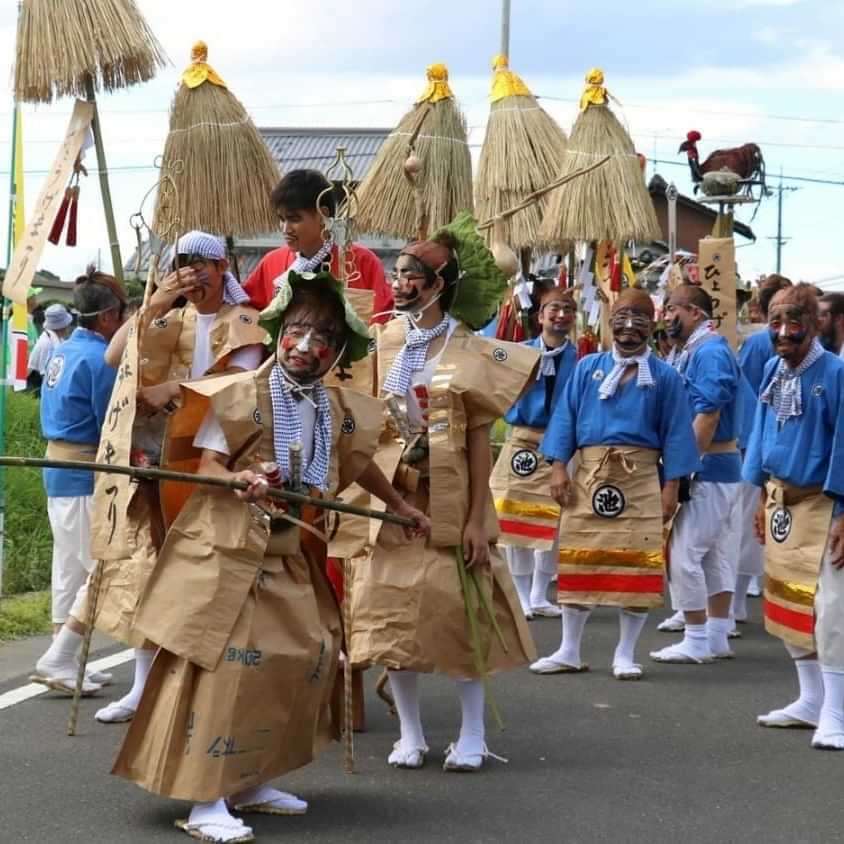
Hyōge Matsuri
ひょうげ祭り
When: 2nd Sunday of September
[past dates: September 11 (2022), 8 (2019), 9 (2018), 10 (2017)]
Where: procession starts here and finishes here
This festival consists on a procession of locals, dressed in folklore costumes and painted faces. The word hyōge refers to being humorous and clowning with joy.
Partecipants carry a portable shrine for 2 km, starting at 14:00 and jumping into a pond at 16:00.
Visit the official website (Japanese) to know more.
Pic © shikokunews
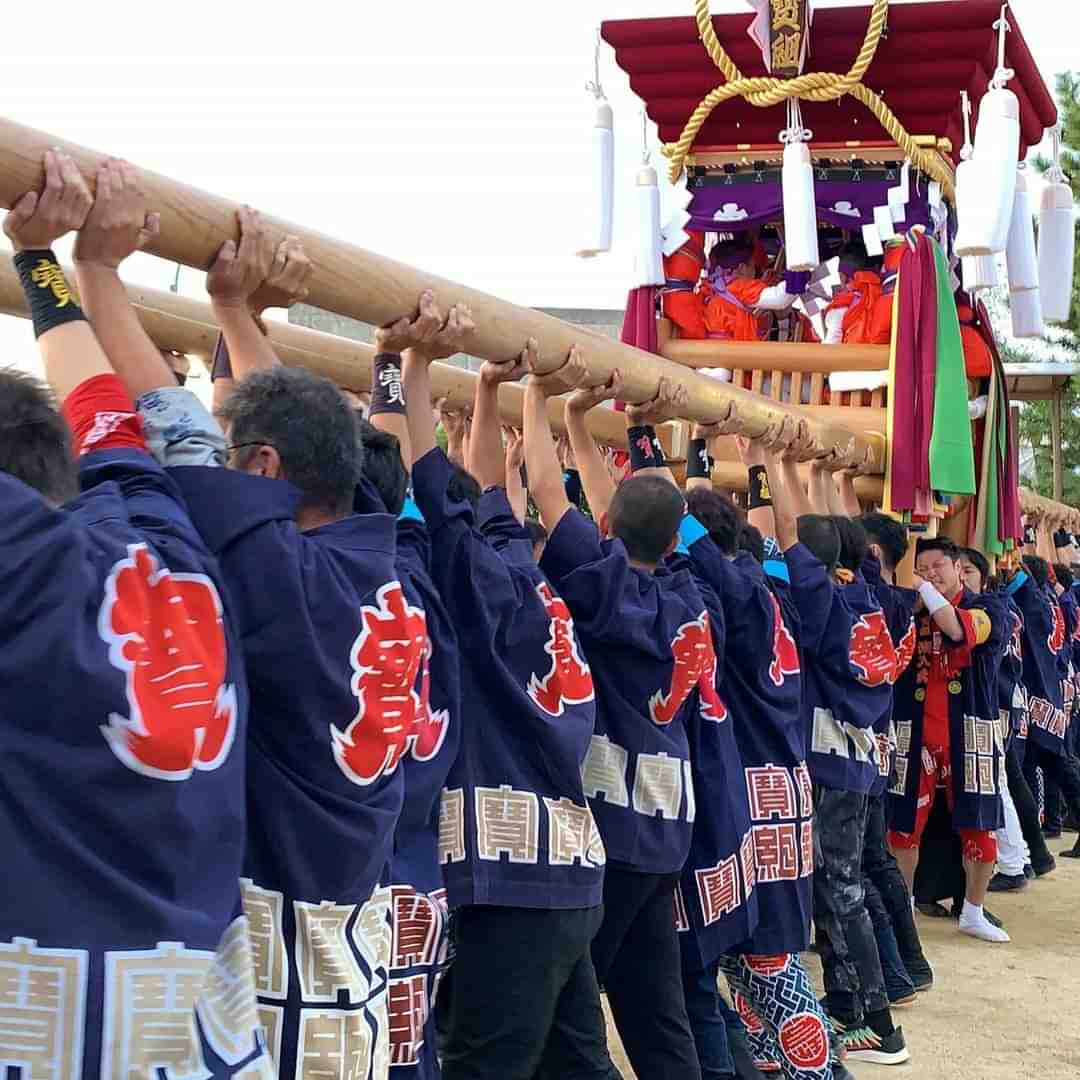
Tawa-jinja Shūki Reitaisai
多和神社秋季例大祭
When: weekend around 10 of October
[past dates: October 8~9 (2022), 12~13 (2019), 6~7 (2018)]
Where: Tawa-jinja Shrine
Saturday events are lion dances and taiko drums procession at the shrine, while the main event is scheduled for Sunday evening, with mikoshi procession lighted by red lanterns.
Visit the official website (Japanese) to know more.
Pic © miki_ish_miki
Best things to do in Kagawa and Takamatsu
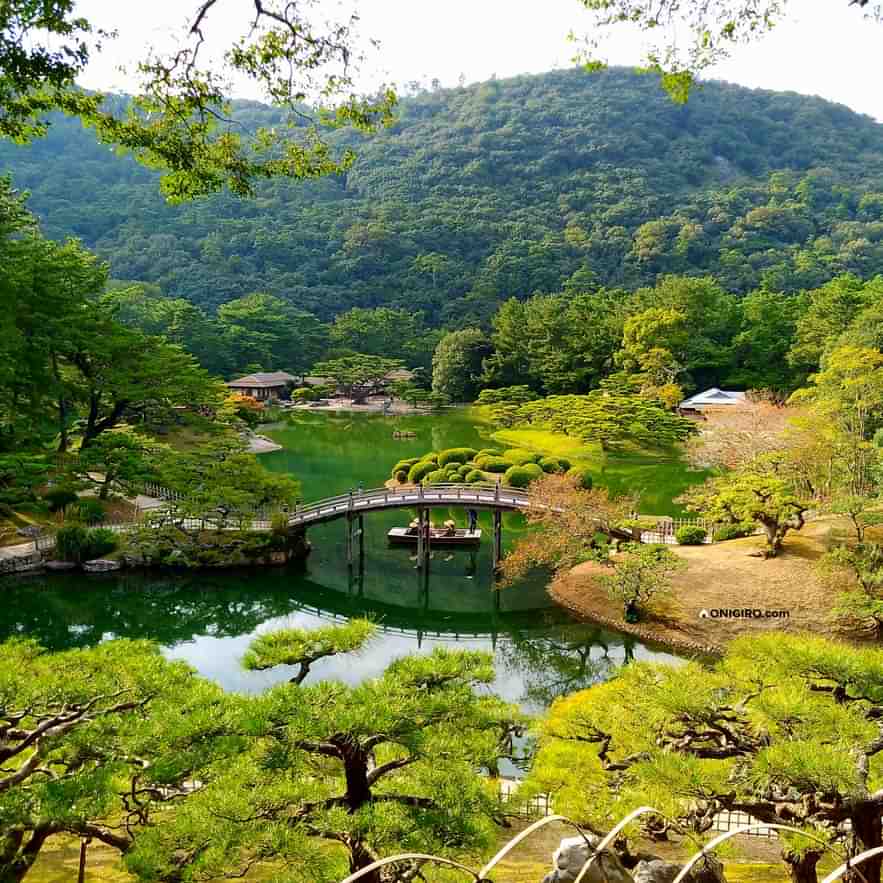
Ritsurin-kōen
栗林公園
This scenic garden is absolutely stunning, grab a map at the entrance and explore it. Wander around observatory decks and make panoramic photos while expert gardeners continuously take care of the hundreds of marvelous black pine trees.
Check it on Google Maps or visit the official website (Japanese) to know more.
Pic © onigiro.com
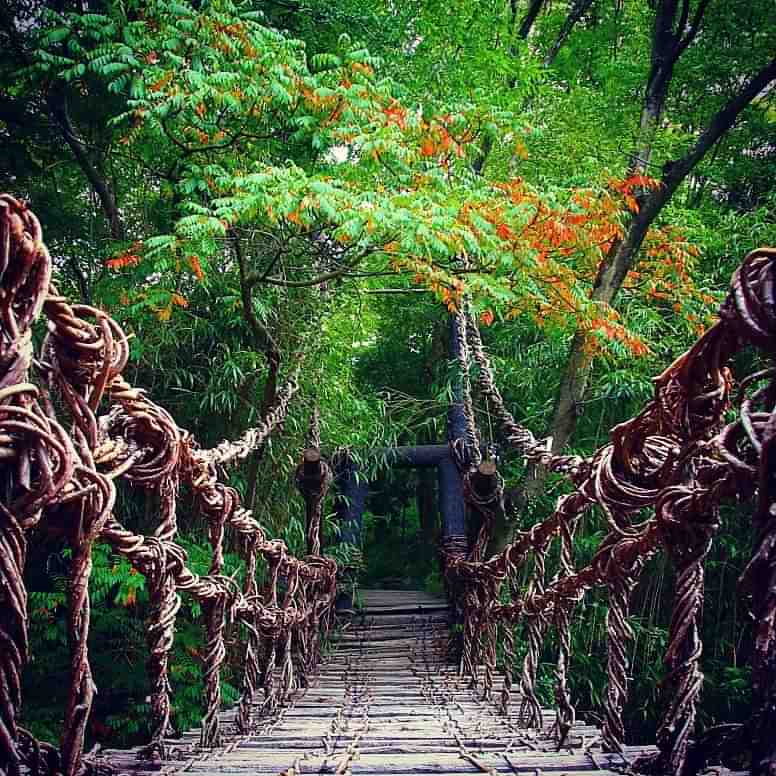
Shikoku-mura
四国村
This reconstructed village shows life in the past centuries, with numbers of traditional style houses from Edo to Taishō period. The suspended vine bridge is really breathtaking, surrounded by nature.
Check it on Google Maps or visit the official website (Japanese) to know more.
Pic © shikoku_mura
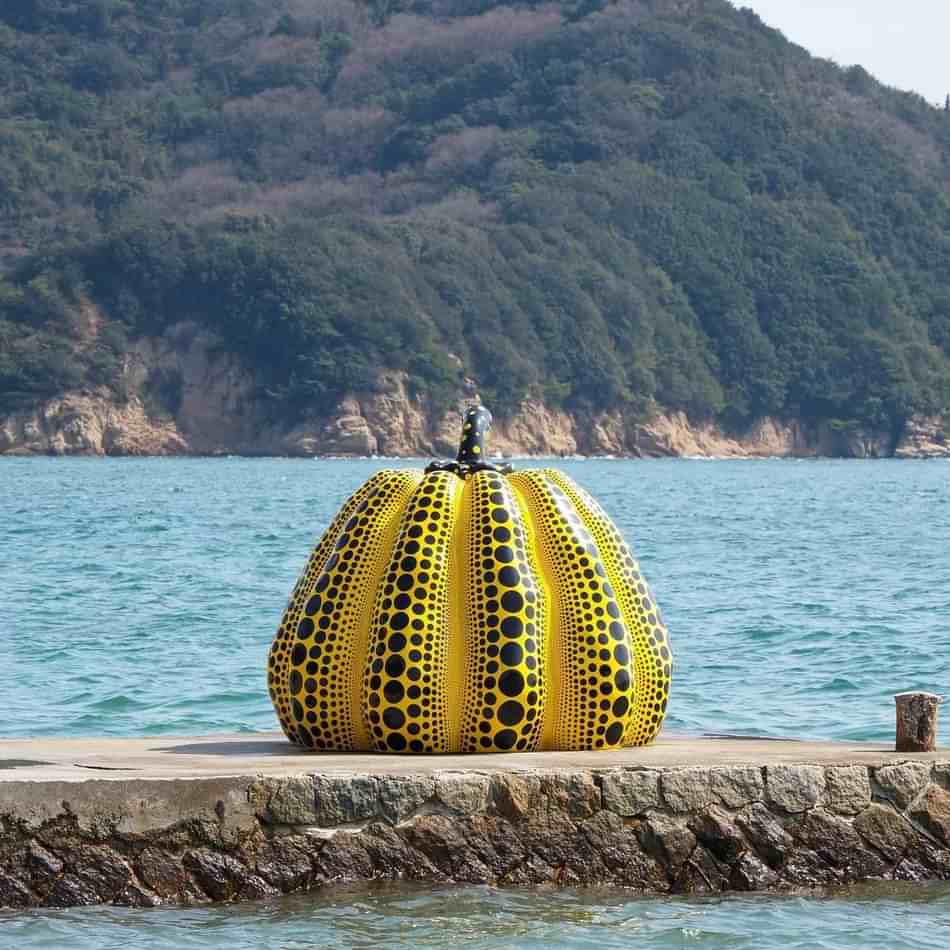
Nao-shima
直島
Nao-shima Island is renowned for its modern art museum, many pop art sculptures spread around the island and the "Setouchi Triennale" festival held every 3 years. The icon of the island is the Yayoi Kusama’s fibreglass yellow pumpkin sculpture, dotted in black and almost 2 meters high.
From Takamatsu port, a one way ferry ticket to Miyanoura port costs from 5 to 10 $ depending on ferry speed. Once at Miyanoura port, you can get around the island by bus or renting a bicycle, that costs less than 4 $ the whole day.
Check it on Google Maps or visit the english website to know more.
Pic © ccctmat
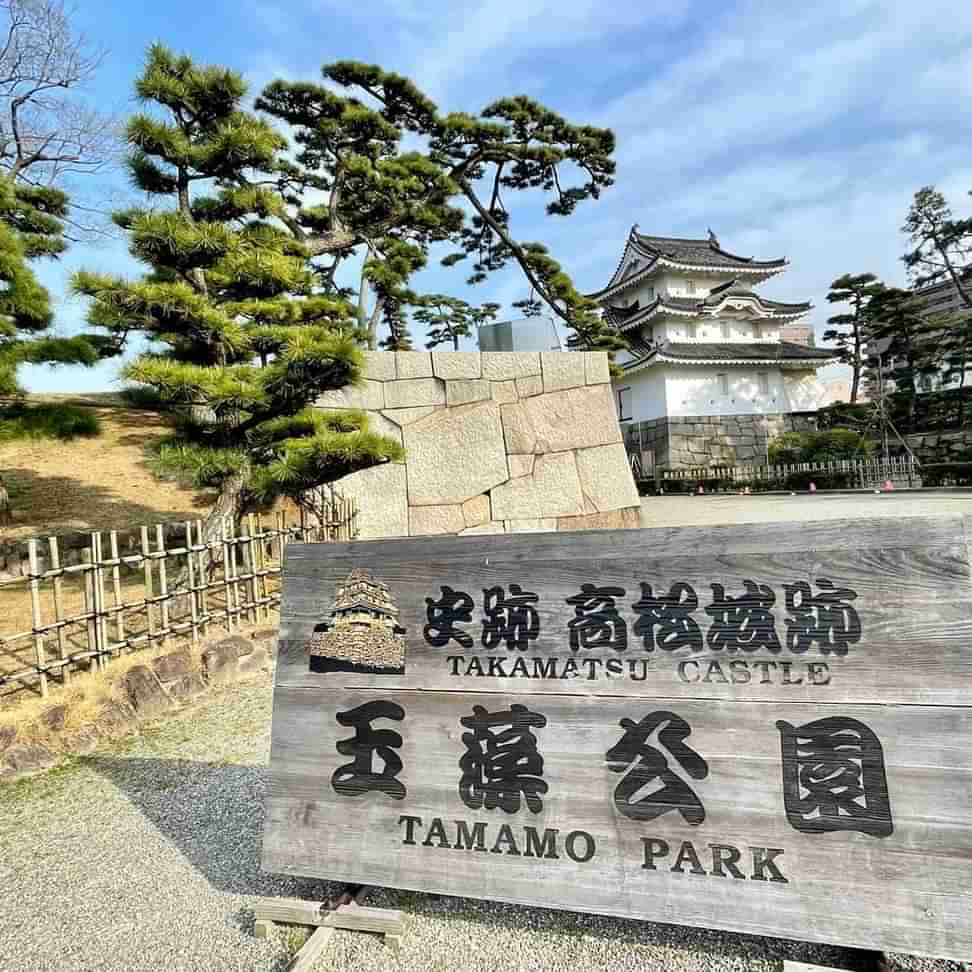
Takamatsu-jō
高松城
Despite the name, this is not a real castle because the main building has been destroyed during the Meiji period, in 1889, leaving the tower foundation surrounded by a sea water moat.
Yet, this point of interest is classified among the 3 best water castles in Japan, along with the castles Nakatsu-jō and Imabari-jō. Anyway, during your stay you can visit Tamamo-kōen Park and Tsukimi-yagura Turret.
Check it on Google Maps or visit the official website (Japanese) to know more.
Pic © orsodanzante
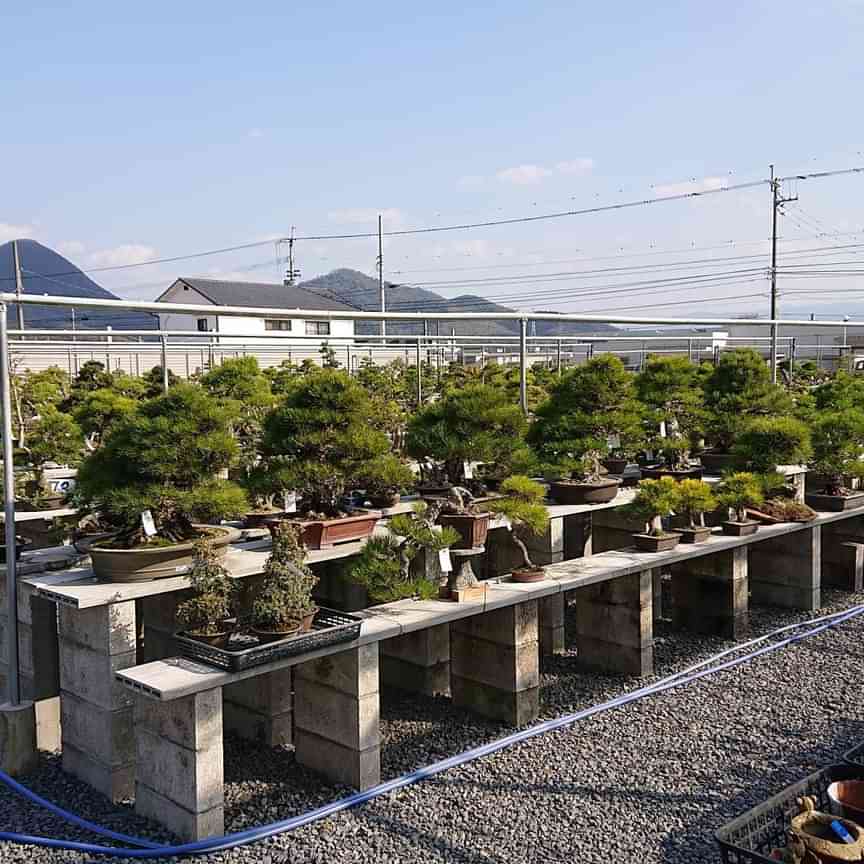
Bonsai Nurseries
Takamatsu is famous as a bonsai-producing city, since 80% of Japanese pine bonsai comes from here. The main varieties of pines are the kuromatsu (black pine), akamatsu (red pine) and goyomatsu (white pine).
West of Takamatsu, there are tens of bonsai nurseries that you can reach through the JR Setoohashi train line. Two of the biggest nurseries are Kokubunji and Kinashi.
Visit the Kinashi official website to know more.
Pic © ta.ma7095
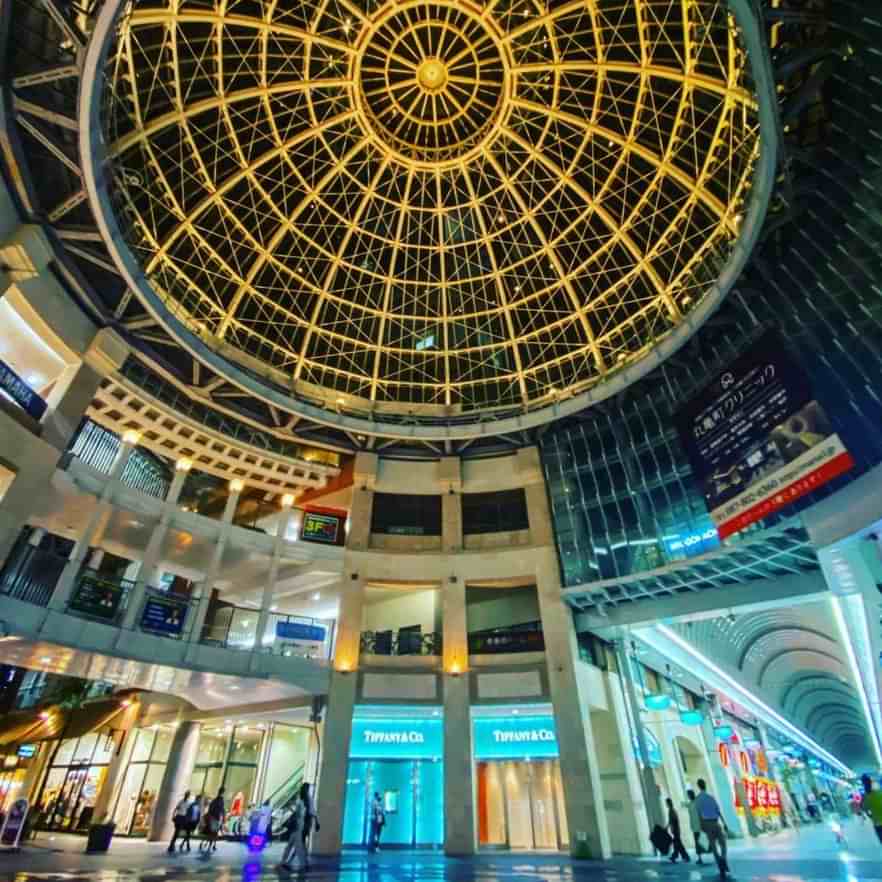
Marugame-machi
丸亀町
This shopping area has a ceiling covered by arcades, so even on rainy days you can go around shopping without the umbrella. Cycling inside this area is forbidden.
Be aware that almost every shop closes at 17:00, as on many Japanese small cities. They are also closed on Sunday and regular holidays.
Check it on Google Maps or visit the english website to know more.
Pic © goldwanko
Kagawa and Takamatsu typical foods
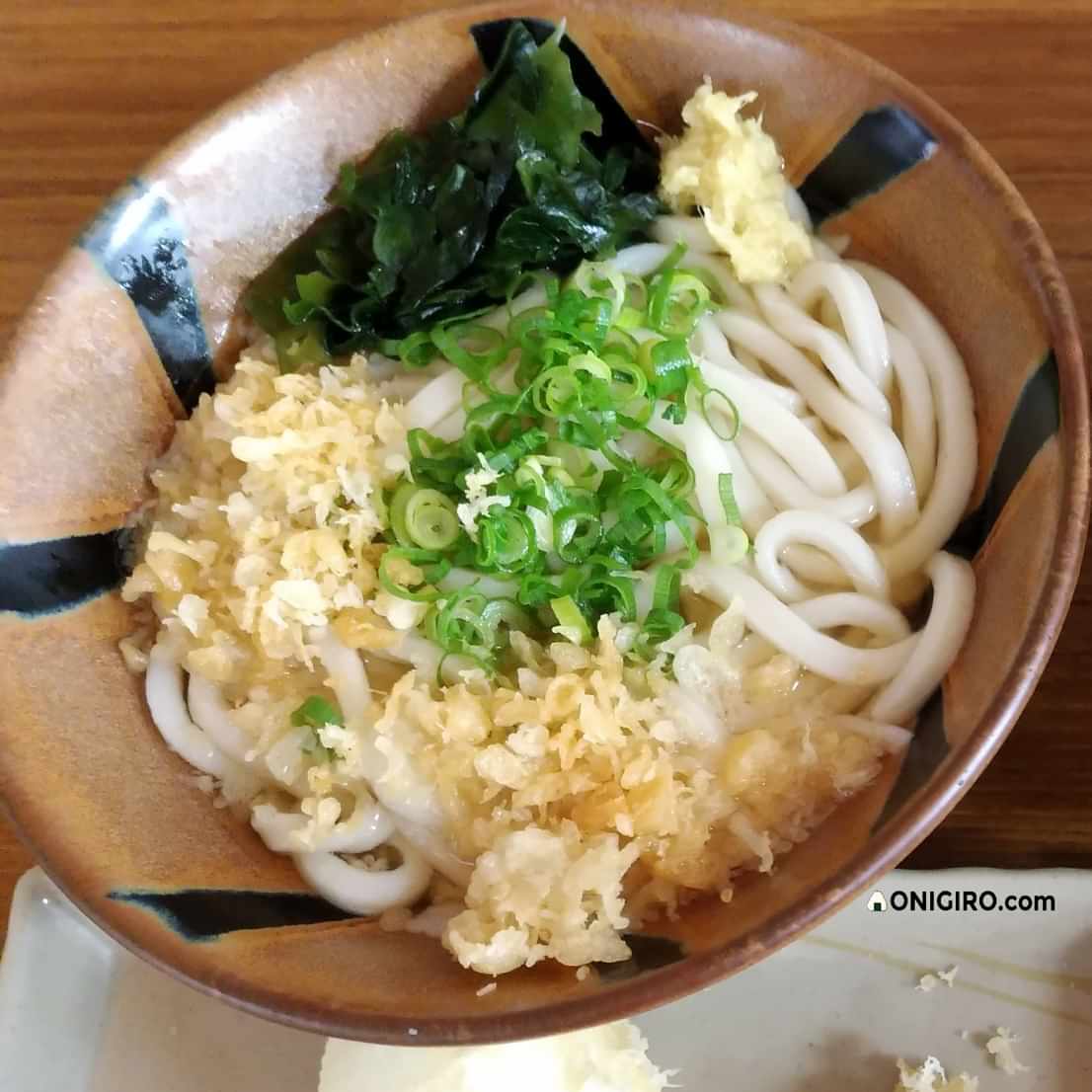
Sanuki Udon
讃岐うどん
Thick rectangular noodles ranked as one of the top 3 udon of Japan, along with Inaniwa and Mizusawa udon. This dish can be enjoyed both in winter, with hot broth, and summer in cold soup.
Local restaurants are often self service: pick up a tray at the entrance, line up while choosing your meal from Japanese menus on the walls (ask to staff for help), add toppings and then pay at the cash desk.
Here's our favorite restaurants: Chikusei, Ueharaya-honten and Udon Bakaichidai.
Pic © onigiro.com
Kagawa and Takamatsu local souvenirs
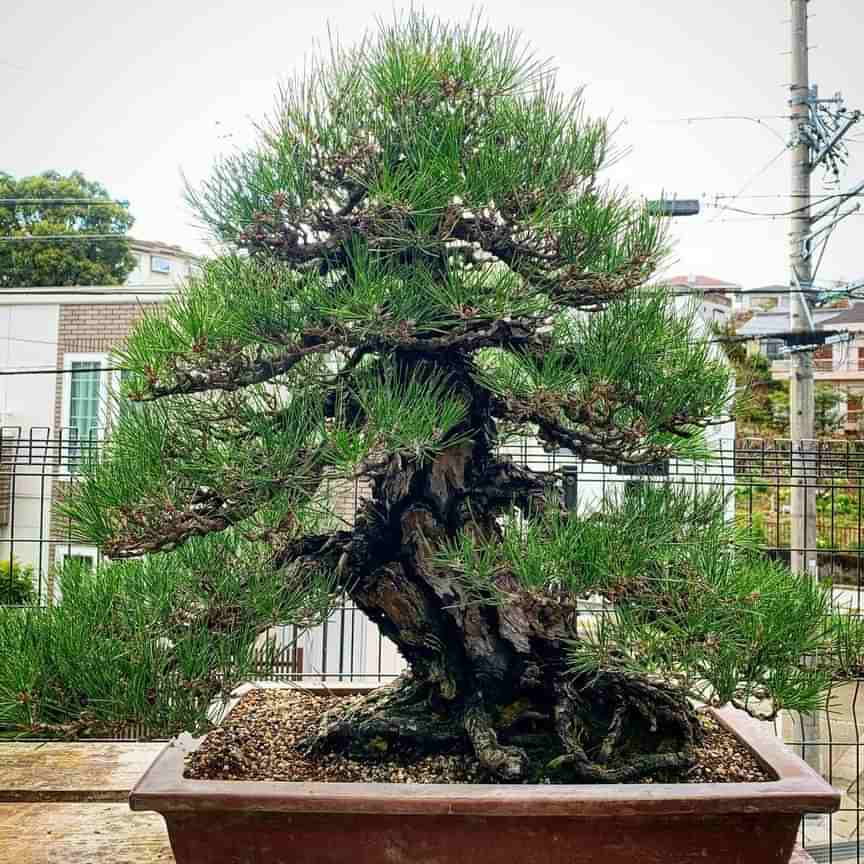
Kuromatsu Bonsai
黒松盆栽
Black pines bonsai are famous for their dark bark and elegant appearance, widely depicted on Japanese works of art.
Just before Ritsurin-kōen Park east exit, there's a bonsai shop where you can buy a cheap small black pine to bring home with you. Check with your airline company if small plants are allowed on your flight.
Pic © bon.the.emon
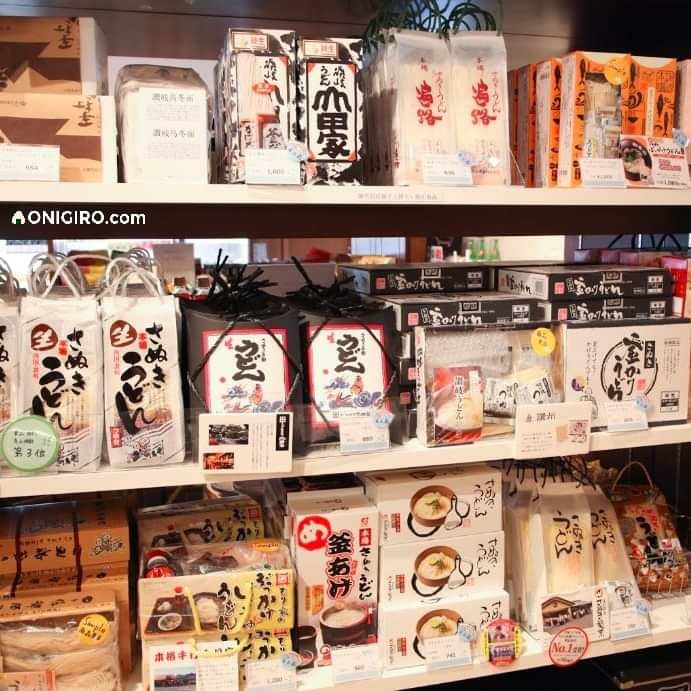
Sanuki Udon Boxes
Many souvenir shops sell boxes with udon and sauces that you can bring home to make your own Sanuki udon.
Inside those boxes you'll find step-by-step instructions to cook the dish. They're written in Japanese language, but with Google translate you'll be able to translate them easily.
Just outside the east exit of Ritsurin-kōen Park, there is a big gift shop that sells all kind of local souvenirs. Among them, there are many varieties of Sanuki udon boxes to choose from.
Pic © onigiro.com
Sanuki Kagari Temari
讃岐かがり手まり
The Kagari Temari are thread-balls made of thousands of threads wound around a soft core. They were traditionally handcrafted by womens through all around Japan.
Little girls used to play with there thread-balls, but in recent years they are more seen as decorations and works of art. In the Sanuki region, a women called Eiko Araki arranges workshops aiming to preserve this delicate yet beautiful form of art.
Check it on Google Maps or visit the official website (Japanese) to know more.
Sanuki Chōchin
讃岐提灯
Sanuki Chōchin are ancient lanterns that originated around the tenth century, introduced from China by the Buddhist monk Kōbō Daishi as votive offerings during the pilgrimage between the 88 temples of Shikoku.
Initially elongated, with time these lanterns have taken on a wide variety of shapes. They are very valuable because they are hand painted with colorful designs and patterns. In Kagawa, these lanterns are made by Masanobu Miyoshi, the eleventh owner of the Miyoshi Shōten store.
Check it on Google Maps or visit the official website (Japanese) to know more.
Aji-seki
庵治石
The Aji-seki Stone is a granite originating from the district of Mure Aji, east of Takamatsu. Characterized by a finely structured surface and the same hardness of quartz that makes it weatherproof, it is also called "granite diamond".
Present in several variations of color and quality, thanks to its beauty and robustness it has been used as a first-class stone material for tombs or tōrō lanterns in temples and gardens.
Today, in the city of Takamatsu, several gift shops such as Machi-no-Schule 963 offer handicrafts made with this stone.
Check it on Google Maps or visit the official website (Japanese) to know more.
Kagawa prefecture nearby destinations
Cities
Towns & more
- Niihama, where the Niihama Taiko Matsuri is held, one of the top 3 festivals of Shikoku island.
Takamatsu city transportation guide
Access to Takamatsu
By train, the closest bullet train station is Okayama station, south of Honshū main island. From Okayama, take JR Setoohashi line to Takamatsu station, the connection takes 1 h and is included within the JR Pass. For more information on Japan railways, check our JR Pass and trains blog post.
By airplane, the closest airport is Takamatsu airport.
Moving within the city
Inside Takamatsu there are 3 local train lines: Shido, Nagao and Kotohira. These lines aren’t covered by the JR Pass.
However, JR Pass covers other 2 local train lines: the Kotoku line, heading to Tokushima, and the Setoohashi line, heading to Okayama.
Bike rentals
Takamatsu has a great and cheap bike rental system, with 6 different bicycle ports around the city: you can both start and finish the rent from any of them.
This is the biggest bicycle port, in front of main train station. Renting a bicycle costs less then 2$ for the whole day, visit their official website (Japanese) to know more.
From Tōkyō to Takamatsu
By airplane, it’s a 1 h flight costing about 170 $. If you also consider flight check-in and airport-to-city center connections, the total time grows to 4 hours and the cost to about 220 $.
By train, take JR Tōkaidō-San’yō Shinkansen line from Tōkyō to Okayama, and then the JR Setoohashi line to Takamatsu station. The overall connection takes about 5 hours and costs about 170 $ without the JR Pass.
Takamatsu 1 day itinerary
Morning
- 8:30 – 9:00 rent a bike in front of Takamatsu train station to move better within the city;
- 9:00 – 10:00 visit the Takamatsu-jō Castle area, just east from the central station;
- 10:00 – 11:30 head south to reach Marugame-machi and walk through the shopping street observing the calm morning routine of locals;
- 11:30 – 12:30 eat a delicious lunch at one of the suggested udon restaurants;
- 12:30 – 14:30 head to Ritsurin-kōen Park, get a map on the entrance and get lost through this marvelous garden;
Afternoon
- 14:30 – 15:00 exit from the east gate of the park, where you can buy more souvenirs and Sanuki udon boxes at the gift shop;
- 15:00 – 16:00 return the bike at this rental port, take a train at Ritsurin station to reach Yashima station;
- 16:00 – 17:30 from there head north to visit both the Shikoku-mura Village and Yashima Temple;
- 17:30 – 18:00 return to Yashima station to go to Takamatsu central station, your hotel or your next destination if you are not staying overnight in the city.

